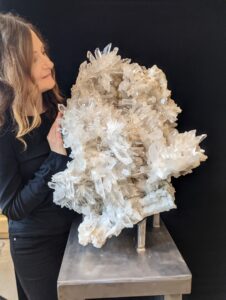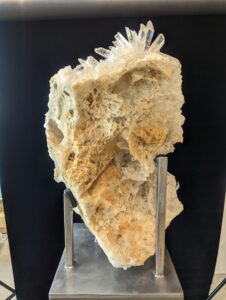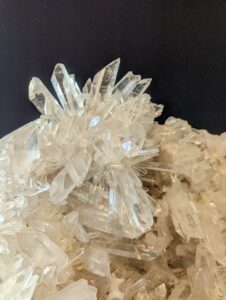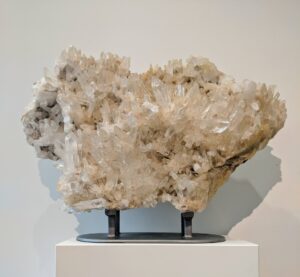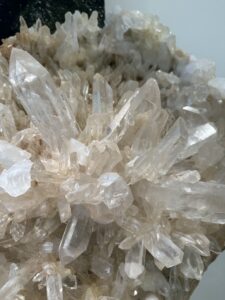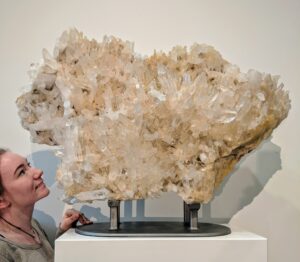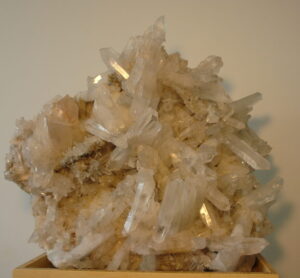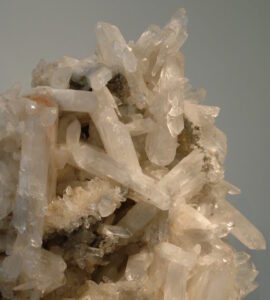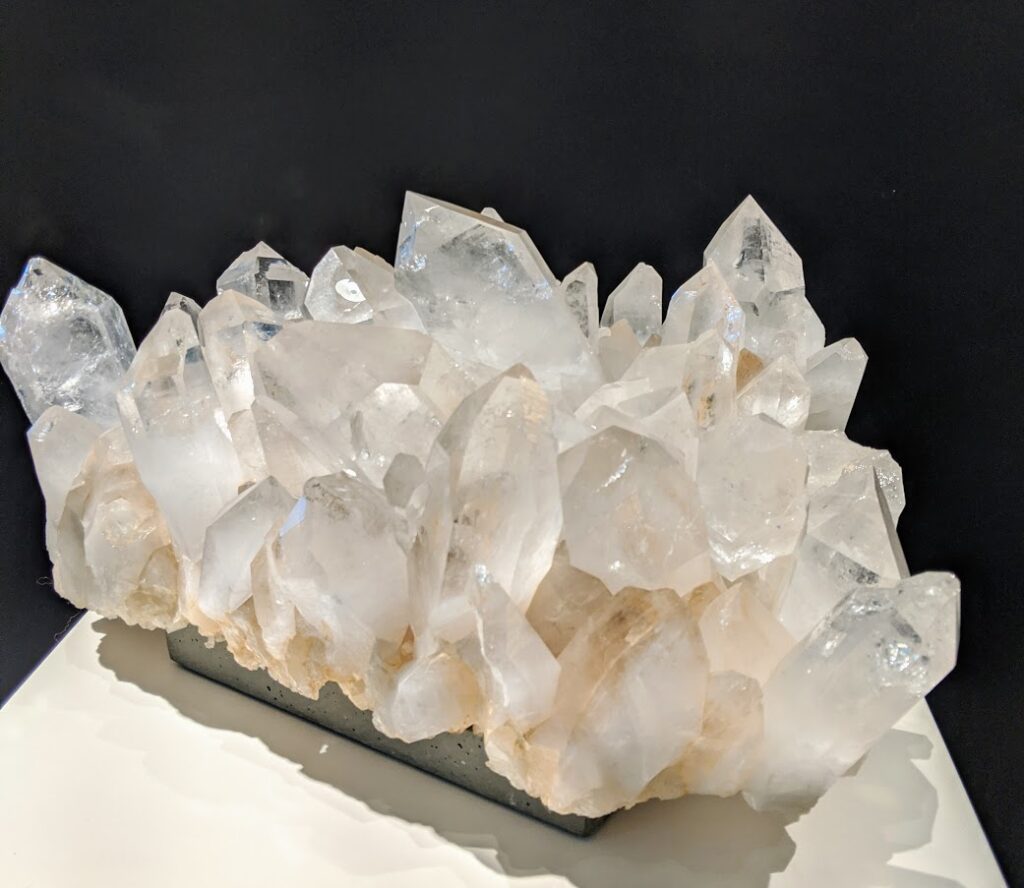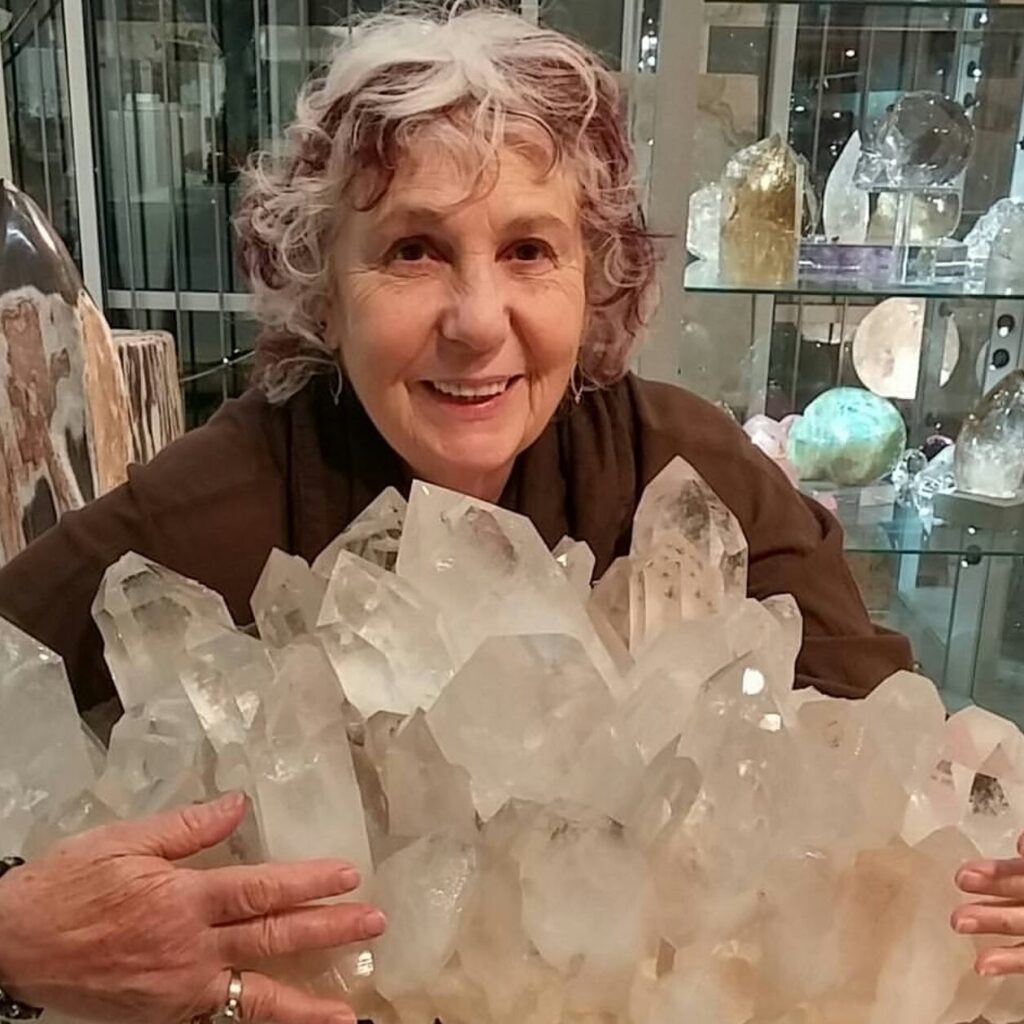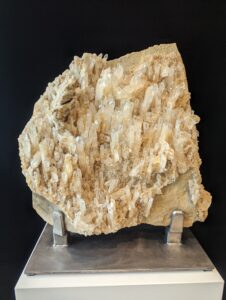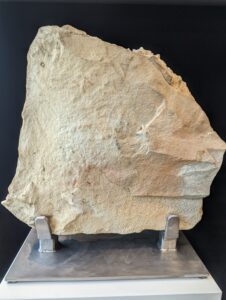“The crystal is defined as any portion of a mineralogical body which exhibits characteristic internal structure and which is also enclosed by symmetrically arranged plane surfaces, intersecting at definite and characteristic angles. It is the “regular” form which a substance tends to assume, during the process of solidification, through the inherent power of cohesive attraction.
Crystals are the blossoms of the mineralogical portion of the Earth; the recognition of the beauty and loving energies of these forms can greatly enhance one’s personal development. They are the myriad fireworks of both universal creativity and individual universal energies.”
– MELODY, Love is in the Earth, The Crystal and Mineral Encyclopedia
The History of Arkansas Quartz
In order for a quartz crystal to form there has to be a very special set of circumstances in place. First, there has to be a superheated solution of silica and oxygen. Then there has to be extreme pressure. These circumstances then have to remain fairly constant for a period of time. No one knows exactly how long it takes to form these crystals but it’s guessed that it happens almost spontaneously when the circumstances are just right. Most quartz crystals are thought to have formed in the earth between 250 million and 750 million years ago.
The Arkansas quartz is said to be some of the youngest, having formed mostly in hydrothermal vents in the Wichita Mountains some 250 to 500 million years ago. There are many different mines there, and thus a wide variety of crystal shapes and sizes from that region. One of the rarest is called McEarl Quartz, and is named after the original mine owner Minnie McEarl. Our dear friend Jimmy Coleman discovered the fine quartz in the 1980s and in doing so uncovered the most amazing blue/white quartz ever discovered. Some of the crystals display blue needle inclusions, which have yet to be identified.
Arkansas also produces a number of different looking quartz formations including phantom quartz, a small amount of smoky quartz, and rare solution quartz.
Each mine has its own distinct characteristics. Some experience disturbances while forming which cause etched patterns. Others form around calcite, causing cast clusters or inclusions of calcite phantoms. Some mines produce extraordinarily large clusters – up to 12 feet across with points that are 3 feet tall, and some mines produce the particularly sought after needle-point clusters and single crystals used for jewelry. What all of the quartz found in Arkansas has in common is that it has a particularly high silica content and so it is prized as “seed crystal” for use in growing man-made crystals for the computer industry. This makes these crystals exceptionally valuable for their pristine nature.
Having collected crystals for over 40 years, we can say without a doubt that Arkansas quartz is one of our favourites. As a result, we have some magnificent pieces for sale in the gallery that are incredibly special and rare. Please contact us if you would like more information on any of the pieces featured below.
Giants in the Gallery
Plains Dancer
Collier Creek Mine, Arkansas, USA
This complex crystal cluster started its journey some 500 million years ago deep in the rich red clay of the Ouachita mountains, and was mined with great care. This cluster was removed from the ground in a giant ball of clay so as not to damage the points. No one knew what it looked like until the soil first was allowed to dry and then was carefully hand sprayed off until the cluster was totally exposed.
It formed over top of calcite which then dissolved leaving pockets behind. This is called a cast cluster which overall makes a piece large but light in weight for its size.
The metal stand for this unique crystal plate was made by our wonderful metal artist Sandra Bilawich. With the stand, this piece measures 62 x 17.5 x 17 inches. Without the stand it is 26 x 17.5 x 17 inches.
Quartz Fan
Crystal Springs, Arkansas, USA
This cluster formed between 250 and 500 million years ago in super heated silica rich waters that flowed up through geothermal vents in the Ouachita Mountain area of Arkansas. It has amazing lustre and very little damage considering its size and the unimaginable length of time that it lay buried within the earth. Extracting something this large from deep in the clay without breaking the fragile points is an amazing accomplishment.
The metal stand for this unique crystal plate was made by our wonderful metal artist Sandra Bilawich.
This piece measures 27 x 38 x 11 inches.
Gwindl
Mt Ida, Arkansas, USA
This rare formation is a unique crystal structure known as “Twisted Gwindl.” This name comes from the German word “gewunden” which means contorted, or twisted. The tabular quartz crystals near the top are stacked and twisted in a clockwise fashion. As far as we know, these formations are only found in alpine regions (most commonly Switzerland) and are believed to be caused by the gravitational forces in the earth. This is the only specimen of its kind ever found in Arkansas.
This stunning cluster was the only “non-giant” of its kind found in a non-alpine region. It was offered to us before it was cleaned, so while much of the piece was obscured, we could see the tips of the crystals and could sense it was something very special. We were amazed and excited when all of the surrounding material was cleaned off and we could see the twisted crystals coming through. When its full form was finally revealed, it was even more beautiful than we could have imagined.
This piece measures 28 x 32 x 9 inches.
City of Kings
Wichita Mountains, Arkansas, USA
Out of a full year’s production, this was the finest cluster found in the famed Coleman mines. Formed over 250 million years ago in the Wichita Mountains, clusters of this size and perfection are extremely rare. Since the earth’s movements cause most large specimens to have damaged points, finding a cluster that is fully intact is a miraculous find.
This piece measures 22 x 10 x 15 inches.
The Summit
Saline County, Arkansas, USA
If you look closely at this marvellous quartz cluster, you will see that many of the crystals are flat. Though the crystals have the requisite six sides, two of the sides are broader than the other four. These are called tabular crystals. Saline County is best known for its solution quartz: tiny, fine, small doubly terminated crystals without matrix. These formed in a kind of gaseous solution hence the name ‘solution quartz.’ This mine was closed many, many years ago and we were extremely fortunate to find such a massive piece.
We are always looking for the beautiful and unusual, and this interesting and multicoloured plate of crystals gives us both of these criteria. The colours are imbedded by nature’s paintbrush that have been dipped in the iron ore that saturates the clay where the crystals formed.
What makes this piece even more special is that it includes a very rare and highly prized formation of crystals known as Japanese Law Twins. This occurs when two tabular crystals form at right angles to each other. This cluster has many sets of this phenomenal formation, which makes it of interest to mineral collectors as well as lovers of nature’s art.
The metal stand for this unique crystal plate was made by our wonderful metal artist Sandra Bilawich.
This piece measures 27.5 x 25.5 x 9 inches.
____
Please contact us if you would like more information and pricing on any of these spectacular and one-of-a kind pieces.



